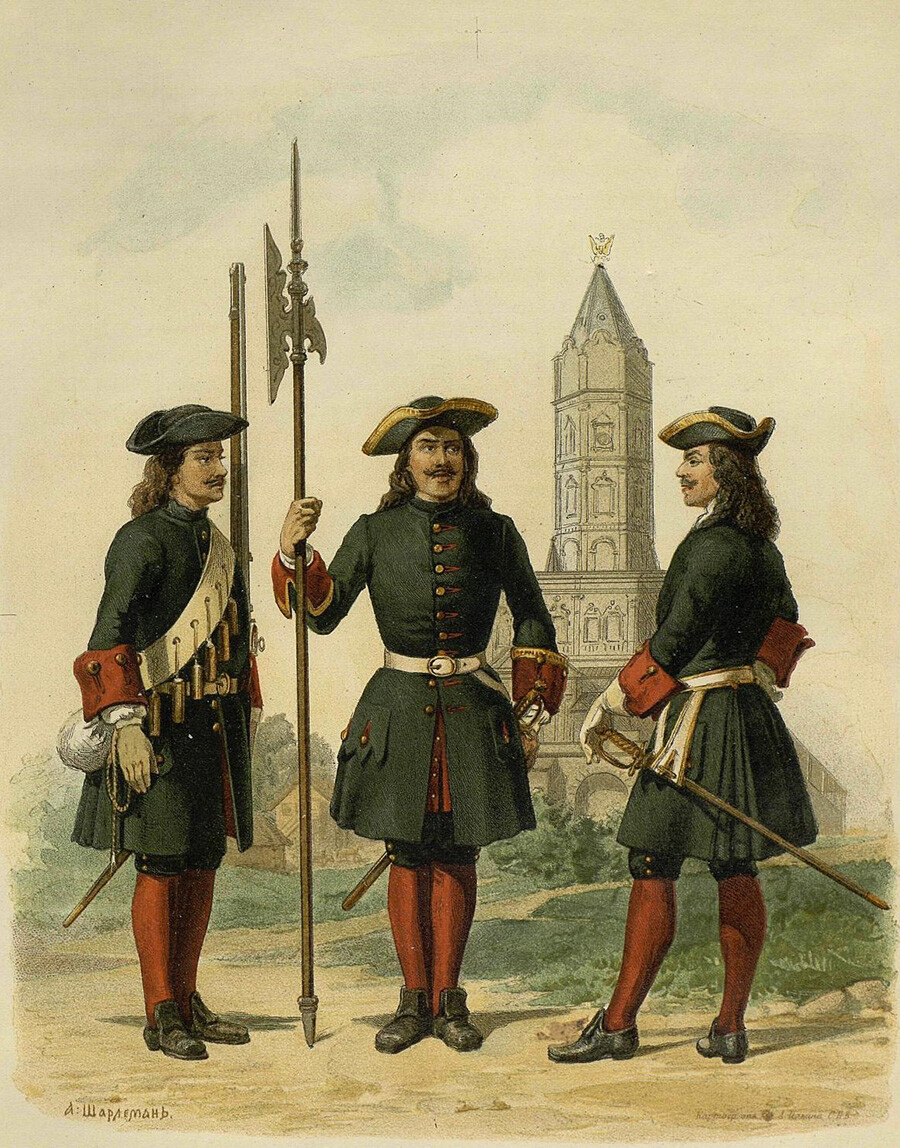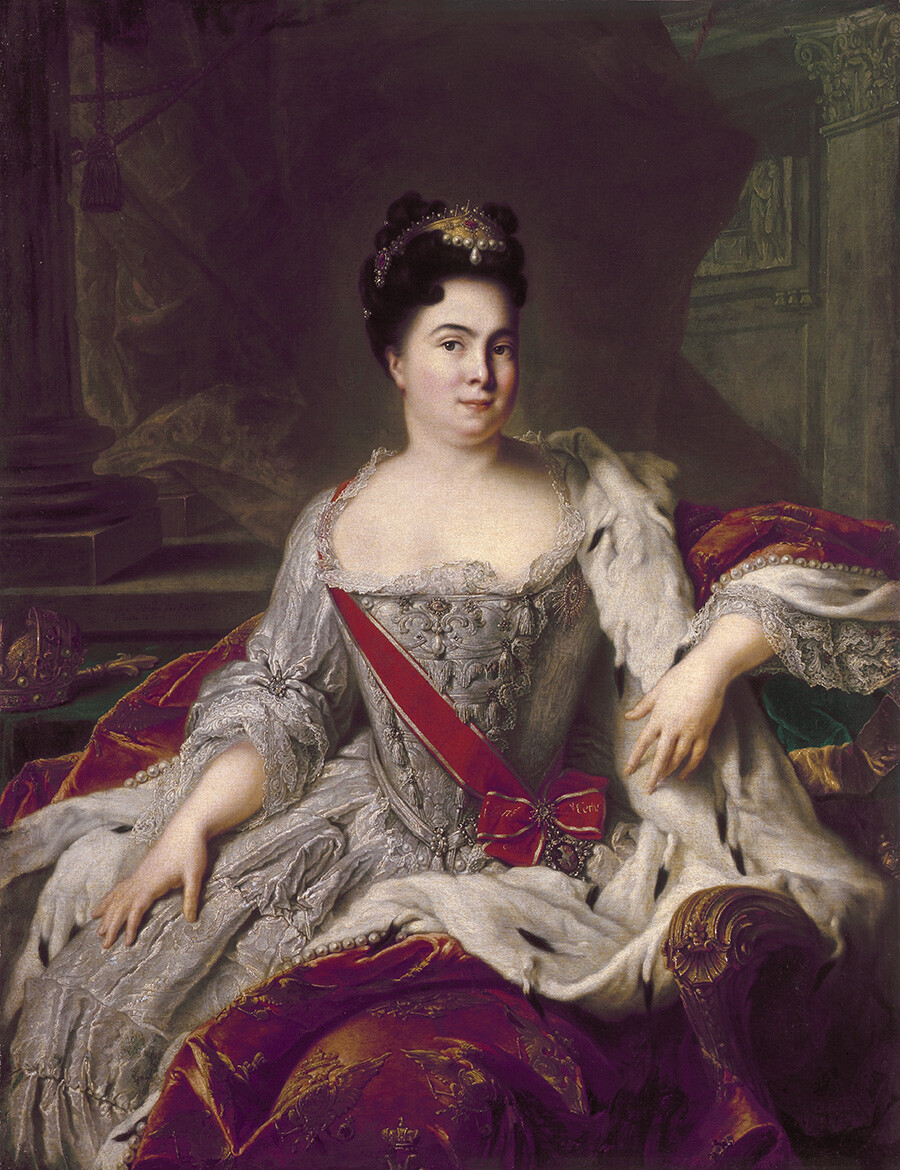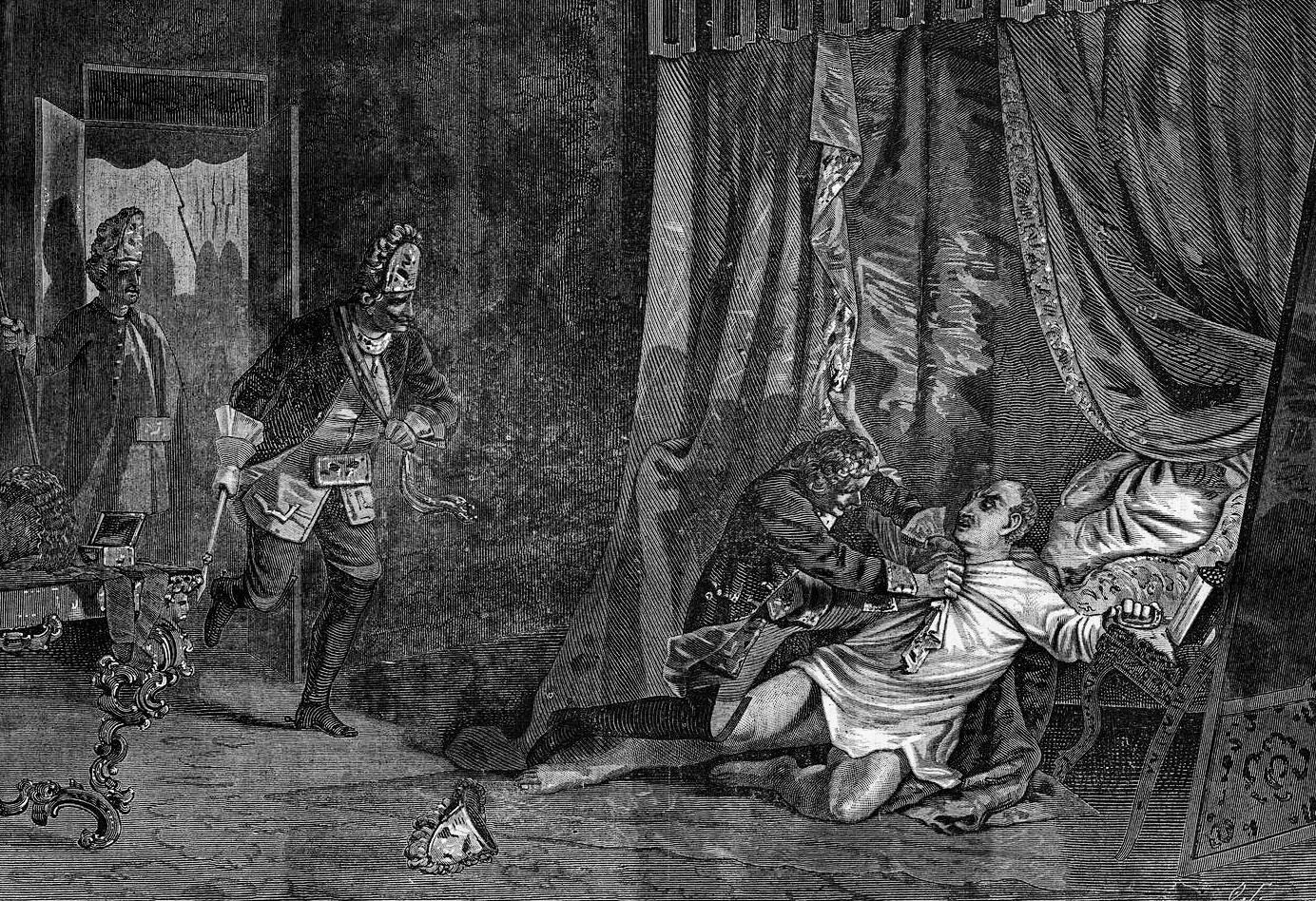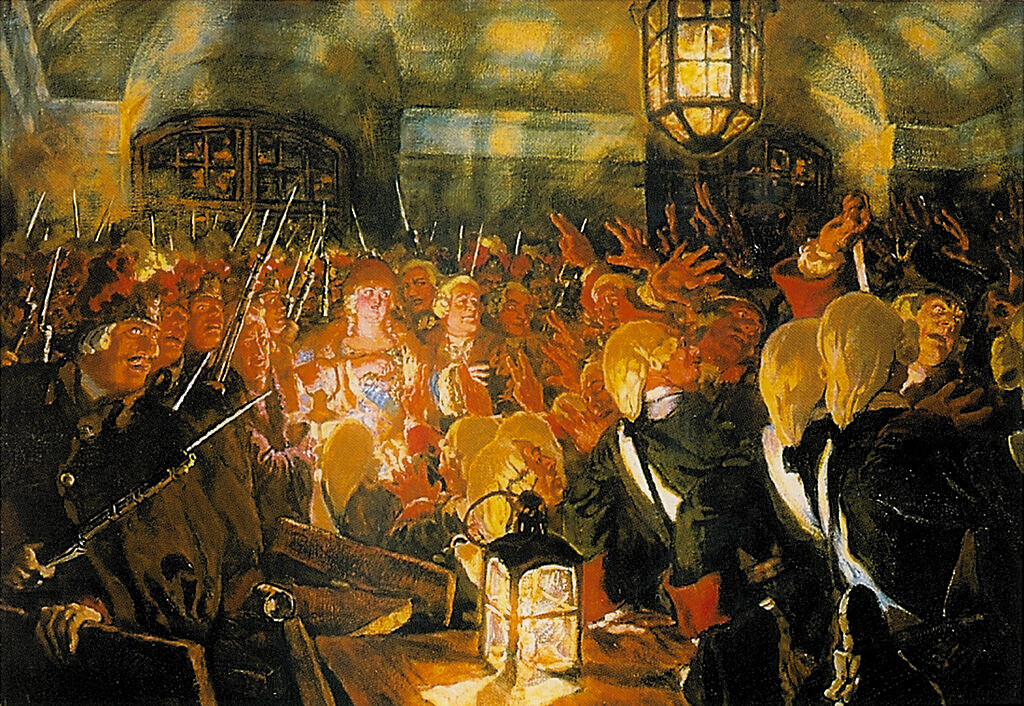How the Guard in Russia overthrew & appointed monarchs

The 18th century in Russian history is often referred to as the ‘Battle of the Palaces’. Political groups fought for power among themselves, overthrowing some rulers and installing others in their place.
The Guard, an elite part of the Russian army, provided forceful support to these groups. These privileged soldiers served at the imperial court, guarded the top officials of the state and were well informed about what was happening in the highest echelons of power.
 Private, sergeant and officer of the Preobrazhensky Life Guards Regiment.
Private, sergeant and officer of the Preobrazhensky Life Guards Regiment.
They quickly realized what an important role they played in this troubled time. After all, the success of a particular coup directly depended on which side they would take during it.
From those whom the Guard brought to power, it demanded maximum benefits and privileges. If the ruler ignored its interests, it could cost them the throne or even their life.
Guards' debut
The Guard first took part in the political life of the country in 1725. Deceased Emperor Peter I not only did not leave an heir, but also did not indicate in his will who should inherit power in the state.
Two groups began to fight for the Russian throne: supporters of Peter Alekseevich, Peter I's grandson, and Catherine Alekseyevna, the wife of the late tsar.
 Catherine I.
Catherine I.
The most decisive and efficient was Catherine's supporter, His Serene Highness Prince Alexander Menshikov. He managed to attract the Preobrazhensky and Semenovsky Life Guards Regiments to his side.
“While the senators were deliberating in the palace on the question of succession to the throne, guard officers appeared in the corner of the conference room… They did not take direct part in the senators’ debates, but, like the chorus in an ancient drama, they expressed their opinions about them with sharp frankness, threatening to smash the heads of the old boyars who would oppose Catherine’s accession,” wrote historian Vasily Klyuchevsky.
Catherine ascended the throne under the name of Catherine I and Menshikov received actual power. However, after the death of the empress in 1727, he was removed from this power.
For an absolute monarchy
In January 1730, young Tsar Peter II died of smallpox, which led to another dynastic crisis. De facto power in the country was wielded by the Supreme Privy Council, which included representatives of influential princely families.
 Anna Ioannovna breaks the 'Conditions'.
Anna Ioannovna breaks the 'Conditions'.
The “supreme leaders” decided to take advantage of the moment and limit the autocratic power de jure. They offered the throne to Duchess Anna Ioannovna, Peter I’s niece, but forced her to agree to a number of terms regarding her future reign — known as the ‘Conditions’.
However, the Guard, in which many representatives of the nobility served, did not see any benefits for themselves in these restrictions. On the contrary, support for the future empress could bring them various honors and privileges.
During a meeting between Anna Ioannovna and members of the Supreme Privy Council in the Kremlin Palace on March 8, 1730, which was attended by representatives of the nobility and officers of the Guard, the latter spoke out against signing the ‘Conditions’. They demanded that the empress be “as autocratic as her predecessors”.
Spanish envoy de Liria recalled: “They all fell at her feet and said: ‘We, loyal subjects of Your Majesty, have faithfully served your predecessors and will sacrifice our lives to serve Your Majesty, but we cannot tolerate tyranny over you. Order us, Your Majesty, and we will lay the heads of tyrants at your feet!’”
Having received such support, Anna Ioannovna demonstratively tore up the ‘Conditions’.
Against the unwanted regent
 Arrest of regent Biron.
Arrest of regent Biron.
Ten years later, the guardsmen again joined the political struggle. In October 1740, after the death of Anna Ioannovna, the empire was ruled by her grandnephew, a young Ivan VI, and the regent for him was Duke Ernst Johann Biron, the favorite of the deceased empress.
True, he did not rule for long. In November of the same year, he was arrested by Field Marshal Burchard von Minich. Accompanied by 100 guardsmen, he burst into the duke's private chambers.
Ivan's mother Anna Leopoldovna then became regent for him. But, she also managed to stay in power for a very short time – a little over a year.
For the daughter of Peter I
Anna Leopoldovna was overthrown by Elizabeth Petrovna, the daughter of Peter I. And, again, the Guard became the driving force of the coup.
 Elizabeth Petrovna surrounded by guards.
Elizabeth Petrovna surrounded by guards.
The guardsmen were dissatisfied with the violation of the procedure for assigning ranks, which the regent handed out at her whim. They were irritated by the drill and the strengthening of discipline through harsher punishments; and the last straw was the order to send the Guard regiments to war against Sweden.
When Elizabeth Petrovna decided to overthrow Ivan VI and turned to the Preobrazhensky Regiment for support, she immediately received it. On December 6, 1741, the future empress personally led the soldiers to the Winter Palace, where they arrested the ruling family.
The overthrow of Peter III
The Guard was also extremely irritated by Emperor Peter III. He dressed them in a Prussian uniform and led Russia out of a successful war against Friedrich II, the King of Prussia, whom he openly admired.
The last straw was the autocrat's decision to start a war against Russia's ally Denmark for the return of his ancestral lands in Schleswig – Peter was the Duke of Holstein-Gottorp.
 Catherine II on the balcony of the Winter Palace, greeted by the guards and the people on the day of the coup.
Catherine II on the balcony of the Winter Palace, greeted by the guards and the people on the day of the coup.
Officers of the Preobrazhensky and Izmailovsky regiments became some of the main participants in the conspiracy to overthrow the monarch and bring to power his wife Sophia Augusta Frederica of Anhalt-Zerbst, the future Empress Catherine II.
On July 9, 1762, Captain Pyotr Passek of the Preobrazhensky Regiment, who was aware of all the details of the planned elimination of Peter III, was arrested for disrespectful speeches addressed to the sovereign. The conspirators had to act immediately.
On the same day, the guard regiments swore allegiance to the new empress and almost all the highest state dignitaries and military leaders followed their example. Peter III, deprived of support, abdicated the throne.
On July 17 of the same year, the deposed emperor died under unclear circumstances.
Assassination of Paul I
 The assassination of tsar Paul I of Russia in 1801.
The assassination of tsar Paul I of Russia in 1801.
The last coup in which the Guard played a significant role was the assassination of Emperor Paul I. Like his father Peter III, the autocrat greatly angered these elite troops, which became one of the reasons for the maturation of a conspiracy against him.
The emperor understood the role the guard played in the palace coups of the 18th century and tried to limit its influence at court: he strengthened discipline, introduced new regulations and used corporal punishment. “To whom much is given, much will be expected,” said Paul.
“The guardsmen were offended by Paul’s attitude towards military leaders and officers. He could demote anyone. There was a case when he ordered one staff captain to be given 1,000 lashes for disrespecting the Order of St. Anne — and Anne was the name of one of Paul’s favorites. Everyone felt that they could be next,” said historian Mikhail Myagkov.
The Guard did not become the driving force behind the conspiracy against the emperor, but took an active part in it. Thus, the conspirators included commanders of four Guards regiments, as well as a number of middle and junior officers.
On the night of March 24, 1801, Paul I was killed in the Mikhailovsky Castle, after which his son Alexander I ascended the Russian throne.
Artifacts from that era and personal belongings of the main characters can be seen at the ‘The Legacy of Peter the Great and Palace Revolutions in the Russian Empire’ exhibition at the Moscow Kremlin Museums until February 23, 2025.

